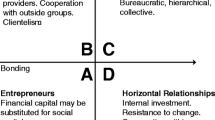Abstract
Corporations are seeking new frameworks, practices, and tools for socially responsible management in their business operations. Restaurantes TOKS, which sells over half a million cups of coffee per month in their 134 restaurants in Mexico, is developing a project in Chiapas, Mexico, to improve productivity and address child labor practices and living wages for local coffee farmers in the village of Talquian. This case study presents TOKS’ Chiapas coffee project and its relationship to evolving principles of corporate social responsibility (CSR) in developing markets, sustainable supply chain management, and new sustainable business models.
Access this chapter
Tax calculation will be finalised at checkout
Purchases are for personal use only
Similar content being viewed by others
Notes
- 1.
The total fertility rate per family is about five to eight children. There are about 300–400 children under the age of 17 in a village of 580 people. (But there has not been a direct count.)
- 2.
Results vary for each farmer, as some locations and parcels have better shading, slope, and more new plants, all of which affect productivity.
References
FairTradeUSA. (2016). Producer profiles: GRAPOS – Grupo de Asesores de Producción Orgánica y Sustentables. Accessed February 12, 2016, from http://fairtradeusa.org/producer-profiles/grapos-grupo-de-asesores-de-producci-n-org-nica-y-sustentables
Grupo Gigante Annual Report. (2012). Accessed January 19, 2016, from http://www.grupogigante.com.mx/pdf/informes/inf14_engpdf.pdf
Grupo Gigante Annual Report. (2014). Accessed January 19, 2016, from http://www.grupogigante.com.mx/pdf/informes/inf12_engpdf.pdf
Haight, C. (2011). The problem with fair trade coffee. Stanford Social Innovation Review. Accessed February 23, 2016, from http://ssir.org/articles/entry/the_problem_with_fair_trade_coffee
NASDAQ. End of day commodity price quotes for coffee, Jan 2006-Jan 2015 (ten years). Accessed February 22, 2016, from http://www.nasdaq.com/markets/coffee.aspx?timeframe=10y
The Coffee Guide: Trade Practices of Relevance to Exporters in Coffee-Producing Countries. Accessed February 23, 2016, from http://www.thecoffeeguide.org/3213-Niche-markets-environment-and-social-aspects-Organic-certification-costs-and-viability-of-production-and-export/
UN Global Compact Report (2015). Supply chain sustainability: A practical guide for continuous improvement (2nd ed.). UN Global Compact Office.
Author information
Authors and Affiliations
Corresponding author
Editor information
Editors and Affiliations
Annex
Annex
Talquian, Chiapas, is located in the southwestern part of Mexico, right next to the border to Guatemala and next to the Tacaná volcano (longitude −92.083611, latitude 15.084722)
Nasdaq. http://www.nasdaq.com/markets/coffee.aspx?timeframe=10y 02/22/2016
Coffee is a very volatile commodity. According to the Oxford dictionary, a commodity is “a raw material or primary agricultural product that can be bought and sold, such as copper or coffee.” http://www.oxforddictionaries.com/es/definicion/ingles_americano/commodity 02/22/2016.
This means that based on the table above, consider the price of coffee on February 22, 2016, at 119.85 cents per pound. It means that a pound of coffee on that date has a face value of $1.1985 USD/pound, which is the standard pricing method used for other common commodities such as orange juice or sugar (Fig. 2).
Different varieties of coffee show different price variations. Let’s see how Robusta (shown in yellow) and Arabica (shown in blue) coffee prices perform over a period of 10 years. The correlation coefficient of these two varieties of coffee shows to be 0.5656 over that specific period of time, showing that a better quality coffee in this case Arabica shows higher volatility over time than Robusta (Fig. 3).
Price change comparison between Robusta and Arabica coffee varieties. http://www.indexmundi.com/commodities/?commodity=robusta-coffee&months=120&commodity=other-mild-arabicas-coffee 02/22/2016
We can see that the effect of TOKS 10–15% price premium offered to the community actually shows almost the same behavior to trade prices. Although they would be able to reach their objective of increasing the wealth level of the community, they fail to reduce volatility on the income of the community at this point (Fig. 4).
Incomes based on market prices for coffee, floor price, and premium paid to farmers. Source for trade prices: http://www.indexmundi.com/commodities/?commodity=robusta-coffee&months=120&commodity=other-mild-arabicas-coffee 02/22/2016. All data in USD
As we can see in Fig. 5, after we adjust productivity, we clearly see how both objectives are reached, and although the income effect does suffer some volatility from the market price of coffee, it does become less relevant due to the level of income achieved.
Incomes based on market prices for coffee, floor price, and premium paid to farmers adjusting productivity increase. Source for trade prices: http://www.indexmundi.com/commodities/?commodity=robusta-coffee&months=120&commodity=other-mild-arabicas-coffee 02/22/2016. All data in USD
Rights and permissions
Copyright information
© 2019 Springer Nature Switzerland AG
About this chapter
Cite this chapter
Murphy, J.H., Clifford, J.J., Vargas, C. (2019). Scaling Up Corporate Social Responsibility: Coffee Farming in Chiapas, Mexico. In: Schmidpeter, R., Capaldi, N., Idowu, S.O., Stürenberg Herrera, A. (eds) International Dimensions of Sustainable Management. CSR, Sustainability, Ethics & Governance. Springer, Cham. https://doi.org/10.1007/978-3-030-04819-8_14
Download citation
DOI: https://doi.org/10.1007/978-3-030-04819-8_14
Published:
Publisher Name: Springer, Cham
Print ISBN: 978-3-030-04818-1
Online ISBN: 978-3-030-04819-8
eBook Packages: Business and ManagementBusiness and Management (R0)









